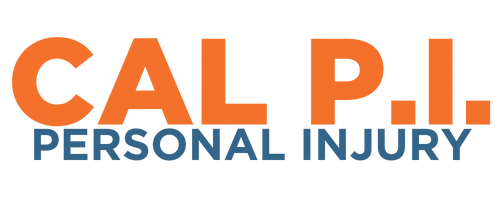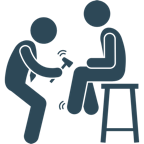

Attorneys typically get involved in personal injury cases by being contacted by potential clients who have been injured due to the negligence of another person or entity. In some cases, attorneys may also actively seek out potential clients through advertising or referral networks.
Once an attorney takes on a personal injury case, they will typically investigate the circumstances of the accident, gather evidence, and work with their client to develop a strategy for pursuing compensation. This may involve opening a case with the relevant insurance companies and negotiating with them to reach a settlement or taking the case to trial if necessary.
In order to coordinate care with different doctors, attorneys may work closely with their client's healthcare providers to gather medical records and other evidence that can be used to support their case. They may also consult with medical experts to help establish the extent of their client's injuries and the long-term impact they may have on their life.
When it comes to demand letters, attorneys typically draft these on behalf of their clients to make a formal request for compensation from the responsible party or their insurance company. These letters may include a detailed account of the accident, an explanation of the client's injuries and their impact on their life, and a specific demand for compensation.
Overall, the process of working on personal injury cases can be complex and time-consuming, and attorneys will need to work closely with their clients and other healthcare providers to ensure that they are able to pursue the compensation they deserve.
Attorneys may find injured clients in a variety of ways, including:
Once an attorney has been contacted by a potential client, they will typically evaluate the case to determine whether they can help and whether the case has merit. If the attorney decides to take on the case, they will then work with the client to develop a strategy for pursuing compensation.
There are several factors that can make a good case for an attorney in California, including:
Overall, a good case for an attorney in California will involve a clear and compelling set of facts, a strong legal basis for liability, and a reasonable expectation of recovering damages.
Attorneys may turn down a client for a variety of reasons, including:
Ultimately, attorneys have a duty to act in the best interests of their clients, and they will typically turn down a client if they believe that they cannot provide effective representation or if taking on the case would not be in the client's best interests.
As an attorney, you may want to refer an injured client to a chiropractor for a variety of reasons. Chiropractors specialize in treating injuries to the musculoskeletal system, which can be common in personal injury cases such as car accidents or slip and falls. By referring your client to a chiropractor, you can ensure that they receive appropriate treatment for their injuries.
Chiropractors can also provide valuable documentation of your client's injuries, including medical records and diagnostic imaging. This documentation can be important evidence in a personal injury case, helping to establish the extent of your client's injuries and the impact they have had on their life. In addition, chiropractors can provide testimony in court or at a deposition, explaining your client's injuries and the treatment they have received. This testimony can be valuable in helping you establish liability and damages in your case.
Chiropractors may also have a network of other healthcare providers that they can refer your client to for further treatment or evaluation, such as orthopedic surgeons or pain management specialists. This can help ensure that your client receives comprehensive care for their injuries.
Finally, chiropractic treatment can be a cost-effective option for clients who may not have health insurance or who have limited financial resources. Referring your client to a chiropractor can help ensure that they receive the care they need, regardless of their financial situation.
After a chiropractor closes a case, an attorney will typically work with the client to gather all of the necessary documentation and information to create a demand letter for the insurance company. This demand letter is a formal request for compensation for the client's injuries and damages, and it is usually the first step in negotiating a settlement with the insurance company.
To create a demand letter, the attorney will typically gather documentation such as medical records, bills, and reports from the chiropractor and other healthcare providers. This documentation will be used to establish the extent of the client's injuries, the medical treatment they received, and the impact of the injuries on their daily life and ability to work.
The demand letter will also typically include a detailed account of the accident and the negligent actions of the other party or parties involved. The attorney will use this account to establish liability for the accident and to argue for the client's right to compensation.
Once the demand letter is complete, the attorney will send it to the insurance company and will begin negotiations on behalf of the client. The attorney will work to negotiate a settlement that provides fair compensation for the client's injuries and damages. If the insurance company is unwilling to negotiate a fair settlement, the attorney may advise the client to pursue litigation to seek compensation in court.
Overall, creating a demand letter is an important step in pursuing compensation for an injured client, and it requires careful attention to detail and a thorough understanding of the legal and medical issues involved.
[Your Name] [Your Address] [City, State ZIP Code] [Date]
[Insurance Adjuster’s Name] [Insurance Company Name] [Insurance Company Address] [City, State ZIP Code]
Re: Demand for Settlement of Personal Injury Claim
Dear [Insurance Adjuster’s Name],
I am writing to you on behalf of my client, [Client Name], who was injured in an auto accident on [Date of Accident]. At the time of the accident, my client was driving her vehicle on [Street Name], when she was struck by your insured, [Name of Other Driver].
As a result of the accident, my client suffered a number of injuries, including whiplash, back pain, and headaches. She sought medical treatment from [Chiropractor's Name], a licensed chiropractor, who provided her with ongoing care and treatment for her injuries.
Enclosed with this letter, please find the following documentation in support of my client’s claim:
- Medical records and bills from [Chiropractor's Name]
- Diagnostic imaging reports, including X-rays and MRI
- Documentation of lost wages and other economic damages
Based on this documentation, I believe that my client is entitled to compensation for her injuries and damages. Specifically, we are seeking a settlement in the amount of $[Amount of Settlement] to cover her medical expenses, lost wages, and pain and suffering.
We would appreciate your prompt attention to this matter and request that you respond to this letter within [Timeframe for Response]. Please note that if we are unable to reach a settlement through negotiations, we will pursue further legal action to seek compensation for our client.
Thank you for your attention to this matter.
Sincerely,
[Your Name]
The time it takes for an insurance company to respond to a demand letter can vary depending on a number of factors, including the complexity of the case and the amount of damages being sought. Some insurance companies may respond within a few weeks, while others may take several months to make an offer.
In general, the insurance company will typically conduct its own investigation of the accident and will review the documentation and evidence provided in the demand letter before making an offer. Once the insurance company has completed its review, they may make an initial offer or request additional information or documentation.
If the initial offer is not acceptable to the client or their attorney, negotiations may continue until a settlement is reached or until it becomes clear that a settlement cannot be reached outside of court. If the case goes to court, the timeline for resolution can vary significantly and may take several months or even years.
It's important to remember that each case is unique, and the timeline for resolution will depend on the specific circumstances of the case. Your attorney can help you understand the process and timeline for your particular case, as well as advise you on the best course of action to pursue fair compensation for your injuries and damages.
The time it takes for a chiropractor to get paid after closing a case can vary depending on a number of factors, including the complexity of the case, the amount of insurance coverage available, and the negotiations between the attorney and the insurance company.
Once the case is settled, the attorney will typically distribute the settlement funds to the appropriate parties, including the chiropractor. The amount of time it takes for the chiropractor to receive payment will depend on when the settlement funds are received by the attorney and when the attorney is able to disburse the funds.
In some cases, the attorney may need to obtain lien waivers or other documentation from the healthcare providers before disbursing the settlement funds. This can take additional time and may delay the payment to the chiropractor.
Overall, it's important for chiropractors and other healthcare providers to work closely with the attorney and to provide any necessary documentation or information in a timely manner to help ensure that they receive payment as soon as possible. Your attorney can provide guidance on the timeline and process for receiving payment in your specific case.
In general, once a case is settled, it may take a few weeks to several months for the settlement funds to be disbursed and for the chiropractor to receive payment.



